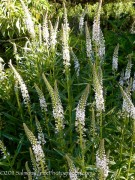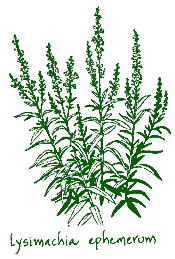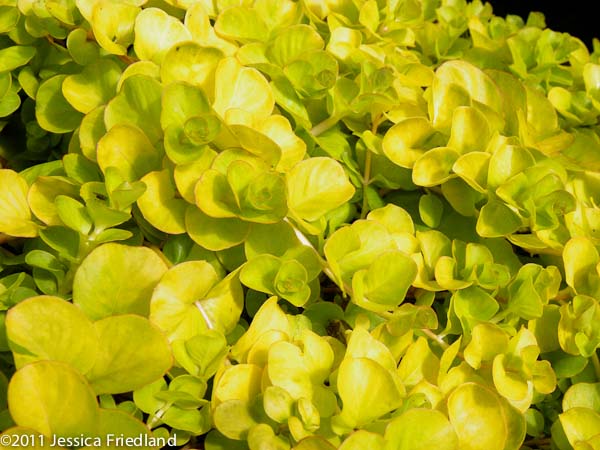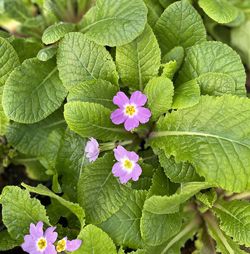Lysimachia
Loosestrife
According to William Cole’s Art of Simpling (1656), Loosestrife prevents oxen from fighting. Some say the name derives from a Greek word meaning “to dissolve strife.” What we could debate is whether form follows function, or vice versa, because this showy group is as hardy as it is attractive.
Some species are tall, others are low, but all are vigorous and easy to grow—so let them loose in cool, moist locations such as woodlands, bogs or waterside meadows. A varied group, each offers a unique foliage form.
Lysimachia clethroides (P-0102)
Each $11.00

Racemes arching like shooting stars, bursting into soft white flowers against a deep green galaxy of foliage, make graceful, upright Gooseneck the jewel of the woodland setting. It’s a toss-up between growing it for flowers or foliage, but either way, it’s a winner.
Blooms July–September.
Size: 3' 0" – 4' 0" high x 0" & spreading wide.
Hardy to zone 4.
Each $11.75


According to William Cole’s Art of Simpling (1656), Loosestrife prevents oxen from fighting, while others say the name derives from a Greek word meaning “to end strife.” Lofty narrow spikes of star-like pearly-white flowers grace this uncommon stately European species that forges a noninvasive clump with opposite and lanceolate glaucous gray-green leaves encompassing sturdy upright stems. A luminous accent in bouquets, Lysimachia ephemerum can be positioned near Thalictrum flavum ssp. glaucum for a gentle match of soothing colors and intriguing blossoms.
Blooms August–September
Size: 3' 0" – 4' 0" high x 18" wide.
Hardy to zone 6.
Lysimachia nummularia ‘Aurea’ (P-0545)
Each $10.75

Native to Europe and Russia, Golden Creeping Jenny has naturalized in North America. Bearing tiny, bright yellow flowers, it creates a striking understory of round, golden foliage and, if planted at the edge of a pond, will reach into the water like rays of sunlight. For stunning contrast, place near plants with purple foliage.
Blooms April–September.
Size: 2" high x 0" & spreading wide.
Hardy to zone 5.












